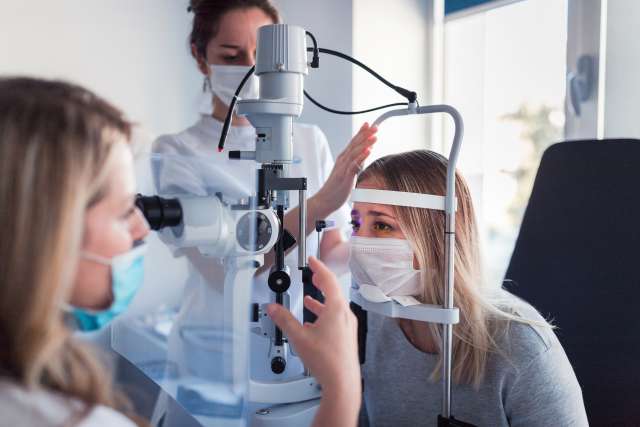Dear Doctors: I was rubbing my face and a cluster of new floaters appeared in my right eye. There's also an arc of light when I look from side to side. I'm told it might be vitreous detachment and that it can damage my retina. I've never heard of this. Is it common? Can it heal or be repaired?
Dear Reader: Posterior vitreous detachment, also known as PVD, can occur at any point in life. It can occur due to trauma and certain health conditions, but it is usually associated with older age. Risk begins at about age 50. As people reach their 70s and 80s, the condition becomes more common.
PVD usually does not adversely affect eyesight. However, in some cases it can result in damage to the retina. To understand the risks it can pose, we should begin with a bit of anatomy.
The eyeball is a rounded orb. The portion that we see -- a colorful iris set in an ovoid of white with a black pupil at its center -- accounts for just one-sixth of it. The rest sits sheltered in the bony socket of the skull. It's there that the structures involved in PVD are located. The lens divides the interior of the eye into two distinct cavities, one in front and one in back. The larger of these, toward the rear of the eye, is known as the vitreous cavity. It's filled with a clear, gelatinous fluid enveloped by a protective membrane. The vitreous humor also contains a matrix of collagen fibers.
The vitreous cavity is backed by the retina, which is made up of layers of light-sensitive cells. The retina also contains a tiny area of specialized cells known as the macula, which is responsible for our detailed central vision. Working together, the retina and macula turn light captured by the structures at the front of the eye into energy. The optic nerve delivers these impulses to the brain, which translates them into visual images.
Remember those collagen fibers in the vitreous humor? They help anchor it to the retina. As we age, the vitreous humor begins to shrink. This causes it to separate from the retina and the collagen fibers to break free. This process, which is irreversible, is known as posterior vitreous detachment. Symptoms include the increase in floaters that you experienced, as well as the arcs of light. These usually decline over the course of several weeks.
In most cases, PVD occurs gradually and does not pose a threat to the retina. But if detachment occurs suddenly, or if a portion of the vitreous humor adheres, it can cause a tear in the retina or a retinal blood vessel. It can also escalate to retinal detachment. In either case, surgery would be necessary.
Due to these potential complications, it's important to see a retina specialist when symptoms of PVD occur. The doctor will conduct a dilated eye exam to check for damage to the retina and may request more detailed imaging tests. It is also likely they will recommend repeated checkups in the coming months until the vitreous has completely and safely detached without complications.
(Send your questions to [email protected], or write: Ask the Doctors, c/o UCLA Health Sciences Media Relations, 10960 Wilshire Blvd., Suite 1955, Los Angeles, CA, 90024. Owing to the volume of mail, personal replies cannot be provided.)





